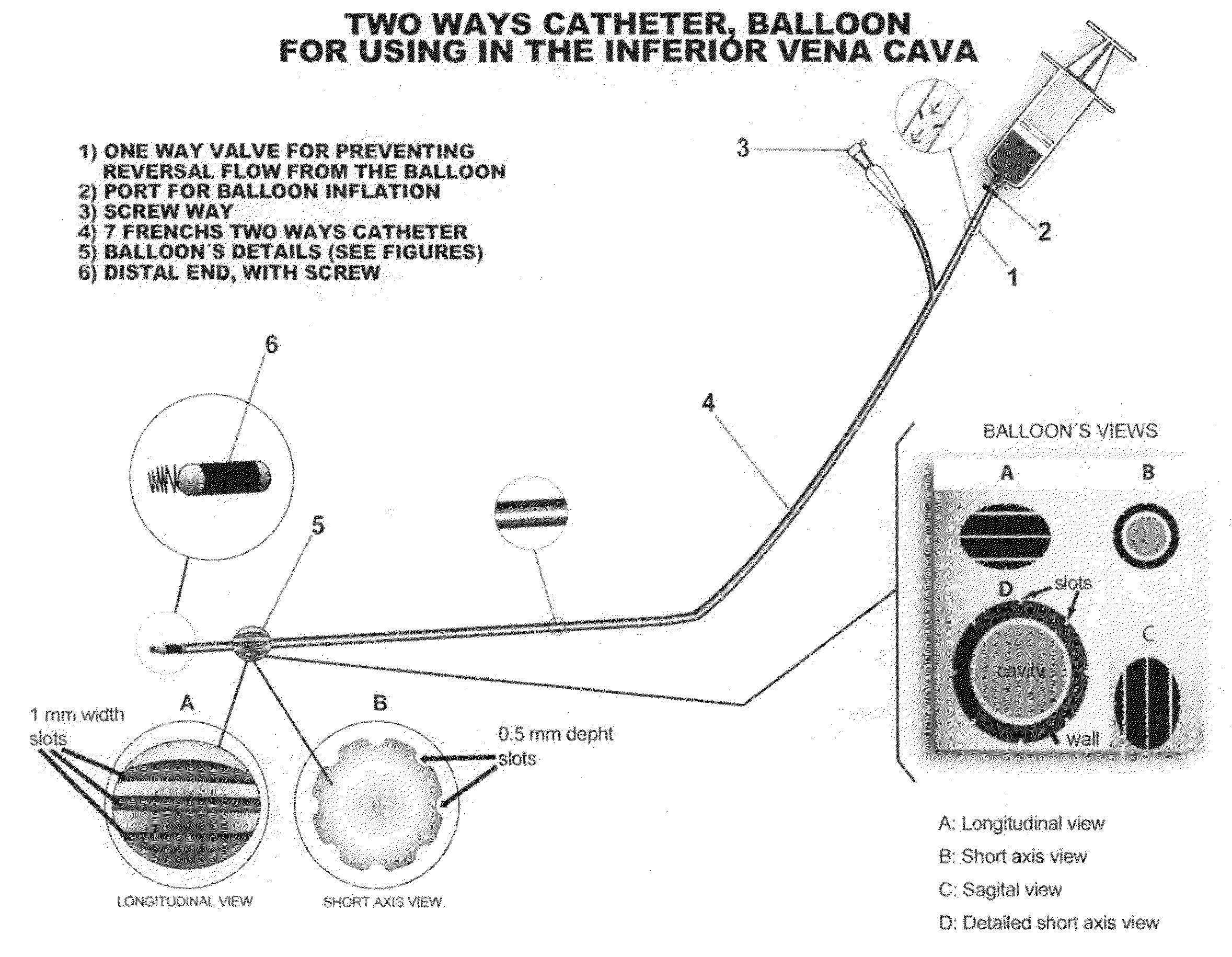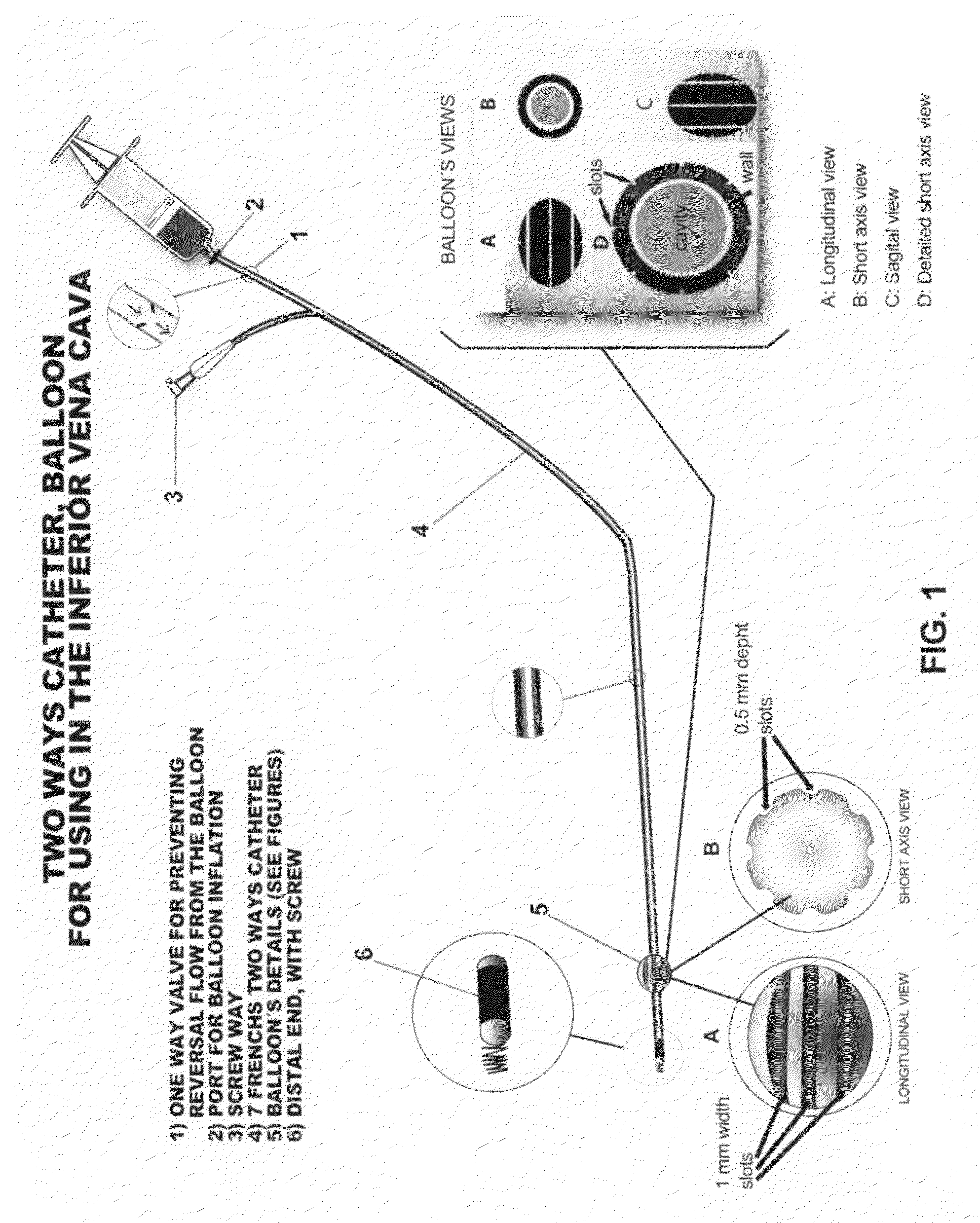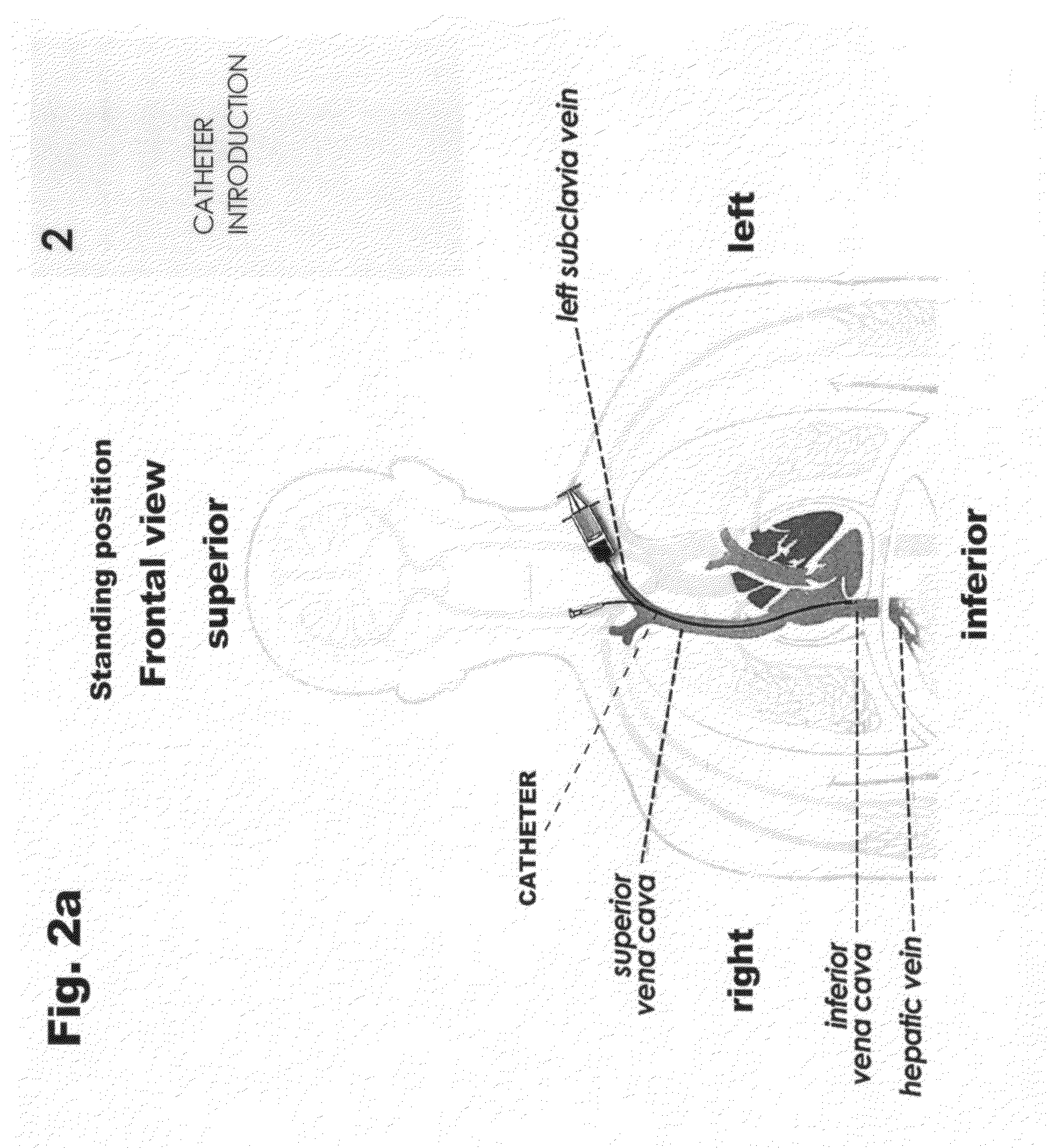Method and a catheter device for the dynamic regulation of the venous return to the heart for the treatment of patients with heart failure
a catheter device and dynamic regulation technology, applied in the field of dynamic regulation of the venous return to the heart for the treatment of patients with heart failure, can solve the problems of risky use of these medicines during extended periods of time, hydro-electrolytic disorders and renal damage, and the effect of reducing the effect of renal function
- Summary
- Abstract
- Description
- Claims
- Application Information
AI Technical Summary
Benefits of technology
Problems solved by technology
Method used
Image
Examples
example 1
[0021]After localizing the patient's inferior vena cava by way of 2D echocardiography, in sub-costal position, in long axis view, its diameter should be measured during expiration (e.g., 2 cm). The collapse is measured during patient inspiration (breath in), normally in the range of 50%, that is, 1 cm diameter reduction for the said case.
[0022]Under these conditions, the balloon has to be inflated up to 1 cm to complete 100% occlusion, when inspiration takes place (breath-in.)
example 2
[0023]In the case that the inferior vena cava measures 2 cm and the inspiratory collapse is 40%, the diameter of the vessel decreases to 1.2 cm; therefore, the balloon should be inflated to that same measurement to obtain the desired occlusion of 100% during inspiration, thus achieving a dynamic flow regulation.
[0024]At the next stage of expiration, the inferior vena cava returns to its normal diameter, allowing venous return through the remaining area.
PUM
 Login to View More
Login to View More Abstract
Description
Claims
Application Information
 Login to View More
Login to View More - R&D
- Intellectual Property
- Life Sciences
- Materials
- Tech Scout
- Unparalleled Data Quality
- Higher Quality Content
- 60% Fewer Hallucinations
Browse by: Latest US Patents, China's latest patents, Technical Efficacy Thesaurus, Application Domain, Technology Topic, Popular Technical Reports.
© 2025 PatSnap. All rights reserved.Legal|Privacy policy|Modern Slavery Act Transparency Statement|Sitemap|About US| Contact US: help@patsnap.com



